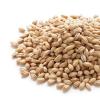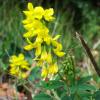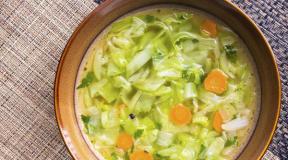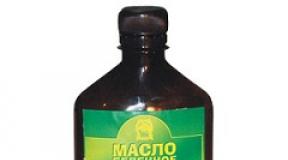Useful properties of calendula in the treatment of wounds, ulcers, hypertension. Calendula officinalis flowers (Calendulae officinalis flores) Calendula Latin family name
Calendula officinalis - Calendula officinalis L. " style="border-style: solid; border-width: 6px;
style="border-style:solid;border-width:6px;border-color:#ffcc66;" width="300" height="225">
style="border-style:solid;border-width:6px;border-color:#ffcc66;" width="300" height="225">
Other names: Crocos full, At random, Marigold officinalis, Marigold pharmacy, Core.
Diseases and effects: tonsillitis, inflammatory diseases of the oral cavity, peptic ulcers of the stomach and duodenum, colitis, enterocolitis, diseases of the liver and biliary tract, cervical erosion, trichomonas colpitis, proctitis, paraproctitis, anal fissures, blepharitis, conjunctivitis, barley, diseases of the cardiovascular system , cuts, burns.
Active substances: carotene, citraksanthin, lycopene, kyaloxanthin, rubixanthin, flavochrome, phytoncides, flavonoids, saponins, calenduloside glycoside, triterpediols, alkaloids.
Plant collection and preparation time: May - September.
Botanical description of calendula officinalis
An annual herbaceous plant of the Asteraceae family with a peculiar smell. The stem is branched up to 90 cm high. The root is taproot, branched. The leaves are alternate, the lower ones are oblong-ovate, with petioles, the upper ones are oblong or lanceolate, sessile. Inflorescences - baskets, single, reaching 3-8 cm in diameter, located at the ends of the stems and branches; marginal flowers - reed, orange or yellow, pistillate; internal - tubular, reddish, staminate. The fruits are achenes of various shapes and sizes: sickle-shaped or arcuate, elongated. Weight of 1000 seeds - 7-15 g.
Distribution of calendula officinalis
In the wild, calendula grows in South America, in the countries of the Mediterranean and the Middle East. In Ukraine, it is found as a medicinal plant in specialized state farms and experimental stations, or as an ornamental plant throughout the south of Ukraine.
Medical value of calendula officinalis
The demand of the pharmacy network and the medical industry for this popular medicinal raw material is not satisfied. Flower baskets contain up to 3% carotenoids: carotene, citraksanthin, lycopene, hyaloxanthin, rubiksanthin, flavochrome, etc.; essential oil - about 0.01%, acids: malic, pentadecyl and salicylic - 6-8%; mucus - up to 4%, resins - about 3.4%, bitterness up to 10%, tannins - 6.1%; phytoncides, flavonoids, saponins, calenduloside glycoside, triterpediols and a small amount of alkaloids.
Calendula inflorescences and medicinal preparations from them have a wide spectrum of action and are used both in official medicine and in folk medicine. They have bactericidal, wound healing, anti-inflammatory, hypotensive, cardiotonic and sedative properties. In the form of an infusion (10:200) it is used for sore throat, inflammatory diseases of the oral cavity, and also as an antispasmodic, choleretic and wound healing agent for gastritis, peptic ulcer of the stomach and duodenum, colitis, enterocolitis, diseases of the liver and biliary tract. Take 2-3 tablespoons 3 times a day 30 minutes before meals.
In gynecological practice, cervical erosion and trichomonas colpitis are treated by douching.
Baths and microclysters are done for proctitis, paraproctitis and anal fissures. For the treatment of eyes (for blepharitis, conjunctivitis and "barley"), use an infusion or tincture (1 teaspoon of tincture per glass of boiled water) in the form of compresses and baths. When rinsing the mouth and throat, microclysters and douching, it is better to use an infusion of flowers. For douching, the infusion is diluted in boiled water in a ratio of 1: 5.
Marigold preparations are effective in diseases of the cardiovascular system, accompanied by palpitations, insomnia, hypertension. Infusion take 2-3 salt spoons 3 times a day before meals.
Calendula tincture is prepared in 70% alcohol from flowers and flower baskets (1:10) and it is recommended to take 10-20 drops per dose 2-3 times a day. For external use, the tincture is not diluted. The drug "Coleflon" is a purified extract from calendula flowers, it is used to treat peptic ulcer of the stomach and duodenum, chronic gastritis in the acute phase. Ointment "Calendula" is prescribed for cuts, burns.
Marigolds are part of many medicinal collections. Widely used for the preparation of cosmetic ointments. In folk medicine, calendula is used to treat bronchitis, rickets, urolithiasis, dermatitis, eczema, and difficult-to-heal wounds.
Medicinal raw materials are dried flower baskets and reed flowers. Raw materials must comply with the requirements of FS-42-1391-80 (for manual harvesting) or VFS 42-1738-83 (mechanized harvesting). External signs of raw materials - partially crumbled or whole baskets without peduncles or with remnants of peduncles no more than 37 cm long. The color of the marginal flowers is reddish-orange, orange, bright or pale yellow, the middle ones are orange, tan or yellow. The smell is weak. The taste is salty-bitter.
During the analysis, the raw material should contain no more than 14% moisture; total ash - no more than 11%; the remnants of peduncles, including those separated from the baskets, - no more than 6%; baskets with completely showered reed and tubular flowers - no more than 20%; browned baskets - no more than 3%; organic impurities - no more than 0.5%; mineral - no more than 0.5. Shelf life 2 years.
Biological features of calendula officinalis
Calendula is a light-loving plant, it reproduces only by seeds germinating at a relatively low temperature - 4-6 ° C, and the optimum temperature is 20-25 ° C. Sow calendula in early spring, cultivate mainly terry form. Shoots appear in 10-15 days, the budding phase occurs in 35-40 days, mass flowering - in 65-75 days, technical ripeness of seeds - in 100-120 days after sowing. It blooms for a long time, from the end of May until the first frost. To obtain the maximum yield of inflorescences, it is necessary to systematically harvest, preventing the formation of seeds. Marigolds are a drought-resistant plant, however, during the period of high summer temperatures and lack of moisture, the intensity of flowering is significantly reduced, the flowers become small even in terry varietal forms. Therefore, in the south of Ukraine, marigolds are recommended to be cultivated on irrigation.
Methods of cultivation of calendula officinalis
Calendula is best placed in field or fodder crop rotations. The best predecessors are clean and busy fallows, row crops and winter cereals. On fields clean of weeds, marigolds can also be placed after vegetable crops. It is not necessary to sow several years in a row in one place.
Methods of basic tillage should be aimed at the destruction of weeds and the preservation of moisture. After harvesting the predecessors, it is immediately necessary to carry out the plowing of crop residues, and after the growth of weeds and carrion, plowing to a depth of 25-27 cm with simultaneous rolling with ringed rollers. Rolling compacts the soil, helps retain moisture and improves weed regrowth. In the future, as weeds appear, the soil is cultivated to a depth of 8-10 cm. By winter, the site should be leveled and carefully cut. In early spring, harrowing is carried out, and before sowing, the soil is cultivated to a depth of 4-5 cm.
Marigolds are responsive to fertilizers. In the conditions of the south of Ukraine, it is better to apply 20 t/ha of rotted manure and mineral fertilizers at a dose of N 60 P 90 or one mineral fertilizer N 60 P 120 for plowing. For simultaneous application of row fertilizer with sowing, it is better to use granulated superphosphate at the rate of 30-40 kg/ha.
Calendula is sown in early spring in an ordinary way with row spacing of 60-70 cm, sowing depth - 3-4 cm, seeding rate - 10-12 kg / ha. For sowing, a SO-4.2 seeder with disc coulters and sowing depth limiters is used. Seeds should be carefully calibrated before sowing.
Marigold sowing care is to keep the soil loose and weed-free.
After the appearance of two pairs of true leaves in the shoots of marigolds, if the sowing density allows (usually at least 15 plants per 1 m2), harrowing can be carried out across the rows. The speed of movement of the unit should ensure the thinning of the rows and the destruction of germinating weeds. In the future, caring for marigold crops differs little from caring for other tilled crops. During the growing season, 4-5 inter-row tillage and, if necessary, manual weeding are carried out. In dry and hot times, marigolds need watering at a rate of 400-600 m 3 / ha of water.
Harvesting of calendula begins with the beginning of flowering manually or mechanically, when at least half of the reed flowers open. When manually collected, the inflorescences are torn off at the very base. Mechanized harvesting is carried out with calendula or chamomile stripping machines, while part of the buds and stems fall into the heap along with flower baskets, which requires sorting the heap on sorting machines.
In the first period of flowering, harvesting is carried out after 3-5 days, and in the subsequent ones, depending on the provision of plants with moisture, after 5-7 days. Up to 15 collections of flower baskets can be carried out during the growing season.
The collected raw materials are immediately sent to the place of drying. For drying, special covered areas or artificial dryers are used at a coolant temperature of 40-45 ° C. Subject to all agrotechnical requirements, the yield is 10-15 c/ha of dry inflorescences.
For seed-growing purposes, it is necessary to use the best fertility sites, where there are no perennial weeds. Crops should not be placed next to industrial ones in order to create spatial isolation in order to preserve all the varietal properties of the crop. During the period of mass flowering, varietal weeding is carried out (sick, poorly developed plants with non-double inflorescences are weeded out and removed from the field. Marigold seeds ripen unevenly throughout the growing season, so you need to harvest at the time when large inflorescences have ripened. You can harvest the seeds with a combine during the period mass browning, however, it is better to carry out manual harvesting.The collected seeds should immediately be dried on sites with canopies or by active ventilation at a temperature not exceeding 40 ° C.
Dried seeds are sorted on grain cleaning machines. The yield of marigold seeds is usually 3-5 c/ha.
Cultivation in the backyard. Marigolds are an indispensable medicine in a home pharmacy, and their flowers adorn the garden from May until the first frost. Under this culture, it is better to dig up the soil in the fall and regularly weed out the growing weeds. Marigolds grow in the conditions of the south of Ukraine under fruit trees, in potato plantations to scare away the Colorado potato beetle, in strawberry plots, in greenhouses to fight the nematode. But the best places are open to the sun. For digging, it is desirable to make 2-3 kg / m 2 of manure, 30 g / m 2 of nitrogen and 30-40 g / m 2 of phosphate fertilizers. But the main factor in obtaining a large harvest is good moisture supply to plants and regular collection of inflorescences.
In early spring, the soil is loosened, leveled and grooves are cut to a depth of 3-4 cm. If the spring is dry, the grooves should be watered, and then the seeds should be sown, sprinkling dry soil on top to prevent the formation of a soil crust that makes it difficult to germinate. Plant care, cleaning, drying and use are described above.
The use of calendula officinalis in rituals
If you have borrowed money and are in no hurry to return, then do the following. On Tuesday during the waning moon, sit at a table covered with blue cloth. Place three black candles on it so that they form an equilateral triangle. Light the candles. Cut out a strip of black paper 3 cm wide and 15 cm long. Place the strip inside the triangle and write on it with white ink or paint the words: "DOREDO CANSER FLIGONE ALSAL". With your left hand, sprinkle the inscription no along its entire length with powdered calendula flower baskets. When the ink dries, take the paper in your hands, slowly tear it along its entire length, starting from the end of the inscription. At the same time, say the spell: "Flargibon sademos, (name of the debtor) cardo falgi ans."
Make sure that the paper strip does not go beyond the triangle formed by the three candles. When finished, blow out the candles and bury the torn parts of the strip and the butt of the black candles in the ground on the east and west sides of your debtor's house. The debt will be returned.
Description of the ceremony provided Sorcerer Mstislav.
calendula in dreams

Calendula in the dream book of the Labyrinth of Mandrake
Calendula officinalis in collections of medicinal plants
Collection number 5
It is used for gastritis, low acidity
Collection number 6
It is used for increased secretion, peptic ulcer. According to the method of preparation and use - infusion.
Collection number 16
Used for peptic ulcer. According to the method of preparation and use - infusion.
Collection number 18
It is used for dysbacteriosis. According to the method of preparation and use - infusion.
Collection number 67
It is used for gastritis. According to the method of preparation and use - infusion.
Collection No. 73
Used for bronchitis. According to the method of preparation and use - infusion.
Collection No. 75
Used for chronic tonsillitis
Collection number 77
It is used for chronic tonsillitis. According to the method of preparation and use - inhalation.
Collection No. 80
Used for laryngitis. According to the method of preparation and use - inhalation.
Collection No. 83
Used for pharyngitis. According to the method of preparation and use - inhalation.
Aster family - Asteraceae
Calendula officinalis is an annual herbaceous plant up to 70 cm high, the stems are branched. Leaves are alternate, sessile or short-petiolate, oblong. Inflorescences in the form of baskets with a diameter of 5-6 cm. The flowers are pseudolingual and tubular, golden-orange. Fruits develop only from reed flowers in the form of dry achenes of various shapes and sizes in the same inflorescence.
Blooms from June until frost, fruits begin to ripen in July.
Spreading
The homeland of calendula is the Mediterranean and Central Europe. It is cultivated everywhere as an ornamental plant, as well as for medicinal and technical purposes as a source of food coloring.
habitat
The plant is photophilous. Prefers moist soils.
Chemical composition
Flower baskets contain large amounts of carotenoids and flavonoids. The smell of flowers and their volatile properties are due to the presence of essential oil.
Calendula inflorescences also contain polysaccharides, polyphenols, sterols, resins, triterpenoid glycosides, mucus, bitterness, and organic acids.
pharmachologic effect
The pharmacological activity of calendula preparations is due to carotenoids and flavonoids.
When applied topically, calendula preparations have anti-inflammatory, wound healing and antimicrobial effects.
When used orally, calendula preparations also show their anti-inflammatory activity, promote the regeneration of the mucous membranes of the stomach and intestines, and the healing of ulcers and erosions.
Galenic forms of calendula flowers have an antispasmodic effect on the stomach and intestines, relieve spasm of the sphincters of the biliary tract, increase the secretory activity of the liver and the flow of bile into the duodenum. In addition, they exhibit a diuretic, diaphoretic, expectorant, analgesic, tonic effect.
Dosage forms
Infusion, tincture, liquid extract, briquettes, ointments, Caleflon antiulcer drug (purified extract).
Marigold flowers are included in SP XI as a medicinal raw material.
Application
Calendula tincture is used as a rinse for inflammatory diseases of the upper respiratory tract, tonsillitis. The same rinses are prescribed for periodontal disease. Apply tincture topically for cuts, purulent wounds, burns. Calendula compresses and ointments are also used to treat wounds, burns and bruises.
Calendula infusions are used as an anti-inflammatory, wound healing and choleretic agent for diseases of the digestive system.
Harmless food coloring is obtained from the marginal calendula flowers.
Procurement of raw materials
Cut off baskets with the rest of the peduncle up to 3 cm long. Fresh raw materials are cleaned of stem and organic impurities. Dried in the shade or in dryers at temperatures up to 45°C. Raw materials are laid out in a thin layer. As it dries it shrinks. The end of drying is determined by the disintegration of the receptacle.
Raw materials are stored packed in a dry dark place, packed in plywood boxes or bales.
Shelf life up to 1 year.
Resources
Calendula for medicinal purposes was grown mainly in the European part of the USSR. The yield of dry inflorescences is on average 5-10 (up to 18) q/ha.
Marigold flowers photo properties therapeutic contraindications
The Latin name is Calendula officinalis L.
Medicinal calendula. Marigold
Aster family
Roll Calendula L. - Calendula
Calendula is called the "red sorceress". In medicine, flower baskets and reed flowers are used, from which infusions and tinctures are prepared.
Description
Calendula officinalis or marigold- Calendula officinalis L.. Annual herbaceous garden and ornamental plant, densely pubescent. plant of the Aster family 40-60 cm high.
The stem is erect, ribbed, often branched from the base, softly pubescent (covered with glandular hairs),
Leaves alternate, elongated, oblong, sessile, amplexicaul, lower - broadly lobed, upper - oblong.
flowers collected in large single baskets, reaching 3-5 cm in diameter in non-double forms and 8 cm in terry forms, located singly at the end of the stem. Reed flowers are orange, yellow or whitish-yellow. The smell is fragrant.
The fruits are achenes of various shapes and sizes.
Blooms from late June to late autumn. Fruiting from the end of July.
Spreading
AT wild calendula grows in the Mediterranean countries. In Russia, it is widely cultivated as a medicinal plant.
Habitats. It grows in communities of undersized shrubs, on dry stony soils.
Growing conditions
Marigolds can be grown almost throughout our country.
Grows in moist, open, sunny places. Predecessors are early harvested garden crops.
The plot is dug up in autumn and 3-4 kg of manure, 40 g of superphosphate and 10 g of ammonium nitrate per 1 m2 are applied. In the absence of manure, 15 g of ammonium nitrate, 10 g of potassium salt and 60 g of superphosphate are added to the same area.
reproduction
Reproduces marigolds seeds, the best sowing time is the end of April - the beginning of May. Seeds are sown at the time of sowing early spring crops with row spacing of 50-60 cm. They are planted to a depth of 2-3 cm. Simultaneously with sowing seeds, 30-40 g of granulated superphosphate per 1 m2 is applied to the soil.
Shoots appear on the 8-12th day. Budding occurs 18-25 days after germination. Flowering is long and ends by the end of the growing season.
In early spring, the soil is loosened with a rake, cleared of weeds and rolled, seeds are sown to a depth of 2-3 cm with a row spacing of 40 cm. Seed germination begins at a temperature of 2-4°C.
Care
Care of crops consists in carrying out inter-row loosening and weeding. In dry weather, it is advisable to water.
Procurement of raw materials
For medicinal purposes, mainly flowers are used (or whole flower heads, or only petals without a flower calyx).
Marigolds collect them all summer as at least half of the reed flowers open in non-double varieties. The break between collecting baskets can be 2-5 days.
The marigolds are dried immediately in the attic or under a canopy (in a well-ventilated area), laying out in a thin layer and often turning over. The temperature in the dryer should not exceed 40,..45°C. Drying is completed when the baskets disintegrate with a light touch of the fingers.
Stored in a tin container for 1 year.
Chemical composition
Calendula flowers contain provitamin A, which is of great importance for all body functions, especially for vision and skin regeneration.
Flower baskets contain carotenoids (carotene, rubixanthin, citroxanthin, flavochrome, flavoxanthin, violoxanthin, etc.), resins, mucus, organic acids and bitter substances.
 Medicinal calendula. - Calendula officinalis L.
Medicinal calendula. - Calendula officinalis L. Application
Medicinal
Calendula Marigold is a favorite folk remedy. In practical medicine, tincture and infusion are used. The therapeutic effect of drugs is associated with the presence of carotenoids, flavonoids and vitamins in the flowers.
Calendula officinalis Marigold healing properties
Calendula - Marigold has anti-inflammatory, astringent, wound healing and blood pressure lowering effects. And also it is used as having expectorant, diaphoretic, diuretic, choleretic, anti-rachitic properties. Calendula is one of the most common plants in folk medicine, it has been used for centuries.
It is bactericidal, antispasmodic, dermatotonic, analgesic and antipruritic. It helps with cuts, bruises, burns, seborrhea, furunculosis, cervical erosion and colpitis.
Calendula preparations are used to rinse the mouth and throat with tonsillitis, stomatitis; they also treat burns, long-term non-healing wounds, stomach and duodenal ulcers.
With proctitis and paraproctitis, calendula - marigolds are used in the form of microclysters. In dental practice - with periodontal disease, bleeding gums and thrush in children. In combination with sulfonamides and antibiotics, it is used to treat angina. The positive effect of calendula preparations was noted in gastritis, peptic ulcer of the stomach and duodenum, colitis, enterocolitis, diseases of the liver and gallbladder.
In combination with chamomile, calendula increases bile secretion. For liver diseases, it is prescribed with St. John's wort, knotweed, wild chicory, sandy immortelle, buckthorn bark and chamomile flowers, taken in equal proportions.
To prepare a decoction, 20 g of the mixture is poured into 3 glasses of cold water, kept for 8-10 hours, boiled for 5 minutes, insisted for 30 minutes and filtered. Drink for 5-6 receptions during the day.
When using infusion, 2 tablespoons of raw materials are poured into 1 glass of hot water, heated in a boiling water bath for 15 minutes and filtered. Take 1-2 tablespoons 2-3 times a day in a warm form.
The industry produces 70% alcohol tincture of calendula. Take it 10-12 drops 3 times a day with meals as a choleretic agent. For cuts, purulent wounds, burns, and for gargling with sore throat, it is diluted at the rate of 1 teaspoon per 1 glass of water.
- Kidney tea (herb) 20.0
- Bearberry (leaves) 10.0
- Horsetail (grass) 10.0
- Licorice (root) 15.0
- Medicinal calendula. (flowers) 15.0
- Camomile (flowers) 15.0
- Large plantain (leaves) 15.0
Take 1 / 4-1 / 3 cups of infusion 3-4 times a day for chronic pyelonephritis
Recipes for various diseases
ALLERGY
Take 10 g of calendula flowers, pour 1/2 cup boiling water over them, steam for 1-2 hours. Take 1 tablespoon 2-3 times a day.
Pour 2 teaspoons of calendula inflorescences with 2 cups of boiling water, leave for 1 hour, strain. Drink 1/2 cup 4 times a day. Calendula can also be used as a tincture. Start taking calendula with 30 drops, bring the volume to 1 teaspoon. Take 2 times a day.
HYPERTENSION
Insist calendula flowers on vodka, taking them in a ratio of 20:100. Insist a week. Take 20-30 drops 3 times a day.
CLIMAX
Take 20 g of calendula flowers and pour 1/2 cup of vodka, leave for 7 days in the dark. Take 40-50 drops, dissolved in 1/3 cup of water, 3 times a day before meals. Especially useful tincture with increasing pressure during menopause. In this case, it should be taken 3-4 weeks.
Grind dried calendula flowers and pour them with 70% alcohol in a ratio of 1: 3, leave for 2 days. Strain and add olive or corn oil to the tincture in a ratio of 1:7, keep at a temperature of 80 ° C for 7 hours in a water bath, constantly adding water. Strain and instill into the nose 2-3 drops in each nostril.
Take 1 part of calendula flowers and stinging nettle leaves. Pour 1 tablespoon of the collection with 1 cup of boiling water, insist. Take 1/2 cup 3-4 times a day 1 hour after meals.
With a strong heartbeat, take an infusion of calendula inflorescences. Pour 2 teaspoons of dried inflorescences with 2 cups of boiling water, leave for 1 hour, strain. Take 1/2 cup 4 times a day.
Place 10 g of calendula flowers in a glass or enamel dish, pour 1 cup of boiling water, cover tightly, wrap with a warm cloth and infuse for 4-6 hours. Strain, squeeze out the residue and filter. Store in a cool place for no more than two days. Take 1 teaspoon in a glass of hot water and rinse several times throughout the day.
Take 2 parts chamomile, 1 part eucalyptus, 1 part calendula flowers. Chop all herbs and mix well. Pour 1.5 cups of boiling water into 1 tablespoon of the mixture and boil for 2 minutes. Insist, wrapped, 30 minutes, then strain. Rinse should be 2 times a day, morning and evening, dividing the solution in half. Start rinsing with a solution with a temperature of 26 ° C, gradually decreasing by 1 degree per day until the temperature reaches 16 ° C. Then rinse with a solution of 15-16°C for a month. Such a rinse will relieve inflammation of the throat and harden it.
Pour 1 tablespoon of dried crushed calendula flowers with 1 glass of boiling water, insist, wrapped, 1 hour, strain. Gargle every 2-3 hours for 10 minutes.
You can use calendula tincture for rinsing,
barrels, pour boiling water over them, leave for 2 hours. Gargle with warm infusion as often as possible. If, after a sore throat, the voice is hoarse, then drink 1/3 cup of infusion 3 times a day. The course of treatment is 2 months.
Keep at a temperature of 80 ° C in a water bath for 7 hours, constantly adding water there, strain. Bury oil in the throat 3 drops 1 time per day.
ARTHRITIS, FROSTBITE, BURN
Take 10 g of powdered calendula flowers and mix with 50 g of petroleum jelly. Rub the ointment into the affected areas.
RHEUMATISM
Take 40 g of marigold flowers and infuse them in 1/2 cup of 40% alcohol for 7 days. Mix the tincture with petroleum jelly and rub it into the affected joints.
STOMATITIS
Pour 1 tablespoon of calendula officinalis inflorescences with 1 cup of boiling water, cook for 10 minutes, strain. Apply as an anti-inflammatory, bactericidal, regenerating agent for rinsing the mouth.
ACNE, ACNE
Purifying mask. Dissolve 1 tablespoon of calendula tincture in 2 cups of water and then moisten a thin layer of cotton wool with this solution. Slightly squeezed cotton wool soaked in the solution is applied on the face, leaving holes for the eyes, mouth and nostrils. After 10-15 minutes, remove the mask, do not wash your face. It disinfects well, but dries the skin a little.
Contraindications
Use in design
This is, undoubtedly, an ornamental plant, which is a must-have in the backyard. Bright orange calendula flowers will decorate flower beds, alpine hills, compositions of medicinal plants.
Other applications
Used in the food industry as a dye in the production of fats and cheese, butter and margarine.
It is a good honey plant.
WHAT'S IN YOUR NAME...?
Do you know where the word "calendar" comes from? From the Latin word "calendae", which in the ancient Roman calendar meant "the first day of the month." There was no “calends” in the ancient Greek calendar, hence the saying that has come down to our days - “... to the Greek calends”, that is, approximately until the time when “crab on the mountain whistles”. In ancient Rome, there were not only "calends", but also a plant growing in gardens, which, if often plucked and given to loved ones, bloomed in spring, summer, autumn and even winter in this warm and humid climate. Every first day of the month, as well as the second and third, new bright sunny flowers bloomed on the plant. Therefore, this plant was named - calendula (Calendula).
Although some ancient authors (Virgil, Pliny) also found the second Latin name - Caltha, this plant is better known under the name Calendula. According to one theory, the word calendae itself, which has no semantic translation in Latin, is related to the ancient Slavic god Kolenda (in a new pronunciation - Kolyada) - the god of a new circle of circulation of the seasons, the god of renewal and youth. According to this theory, the peoples who inhabited the northeastern part of Ancient Rome had close social and cultural contacts with the southern ancient Slavic tribes, which could not but affect their linguistic environment. Roman "calends" just fell on the Slavic holiday of Kolyada. It is likely that the calendula inflorescences that constantly appear, “renew” during flowering, served as a reason for identifying the plant with youth and renewal. Interestingly, the theme of youth in the name of calendula is also represented in some modern languages: Serbo-Croatian (neven) and Bulgarian (nevyan), where neva is a young bride.
Various peoples of the world gave calendula names based on their understanding of the characteristics of this plant. In many nations, the name emphasizes the unusual shape of the curved seeds. In Russia, calendula is called marigold or marigold, in Belarus - nakedness, in Ukraine - nagidki, in Poland - nagietek. In Tatar and Bashkir, calendula is called tyrnak gøl (tyrnak - nail, gøl - flower). Among the Czechs, the curved seeds were probably associated with the crescent, hence the name mesicek, "small month".
In German (Ringelblume), Norwegian (ringblomst), and Swedish (ringblomma), calendula has the name "flower-rings" or "flowers-curls", which also suggests the shape of the seeds. In Germany, the people also refer to calendula as an annular rose, golden flowers, oil flowers, and ritual flowers. The latter name also resonates with the Greeks, who have a name for calendula to nekrolouloudo (necroloulobo), where "loulobo" is a flower and "necro" is something referring to the dead. The Danish name - morgenfrue - can be translated as "morning lady".
In practical and wise China, calendula is called the "flower of 10 thousand years", where it symbolizes a long life. Calendula is denoted by two hieroglyphs:
In some countries, the name is clearly influenced by the beautiful calendula inflorescences. The most enthusiastic names in Spain and Portugal are maravilla and maravihla, which means "miracle, wonder" or "delight, admiration", in a word - "wonder flower".
However, wild-growing calendula usually has small and inconspicuous, compared to varietal, yellow inflorescences. In one of the languages of the Caucasus - Lezgi - calendula is called khipi tsuk, which simply means "yellow flower" in translation. In Moldova, along with others, there is the name galbenele - "yellowish".
Making a small digression, one can marvel at how different the attitude towards calendula can be: calendula flowers can be perceived as something bright and extraordinary, and at the same time - as the most ordinary, fading against the background of other, more expressive flowers. Examples of this can even be found in the cultural heritage of the society. St Ihi V.M. Shiryaev reveal the poet's figurative view of this flower:
"Splendid avenues
my Moscow makes noise confidently.
She is full of poets
as if the fruit is a tree.
So big and bright!
Where to compete with colleagues!
I would like in a remote park I
Grow calendula flower.
Calendula, my favorite!
I've been growing you all summer.
You are bitter, unpretentious,
Orange, healing ... "1981/192/.
AT Moscow Theater Center named after M.N. Yermolova in 1998 staged a performance based on the play by the American playwright Paul Zindel "The influence of gamma rays on pale yellow marigolds." The name reflects the emotional coloring of the action, which shows the existence of the main character - Beatrice, in essence, still a young woman, whose hopes for a better life remain hopes.
Another American, the great science fiction writer Roger Zelazny, in his novel Ash Bridge, expressed his attitude towards calendula, unfortunately, rather unambiguously: “Victoria passed through the gate, closed it behind her, moved in a circle to the south wall. Only marigolds grew here. Neither she nor Dick ever thought that special flowers were needed.
Gabriel Garcia Márquez, on the contrary, very figuratively singled out the calendula, calling the heroine Manuela Sanchez in the novel "Autumn of the Patriarch" the "garbage dump calendula".
Sometimes calendula is used for allegorical transmission of thoughts, as, for example, in the poems of the poet A. Zharov:
“... Calendula of the evening with an ampoule of dreams
It broke on the pink vault ... ".
The title of the film by Sergei Snezhkin "Calendula Flowers", which won the main prize at the 6th Russian Film Festival in Vyborg (August 1998), apparently also has an allegorical meaning, at least it is difficult to explain it based on the plot. The film is based on the works of A.P. Chekhov. Anton Pavlovich himself, most likely, would have called it "Marigold Flowers" - this plant in Russia began to be called calendula much later.
Marigold officinalis, or calendula officinalis (lat. Caléndula officinális) is a herbaceous plant, a species of the genus Calendula of the Aster family.
Summer herbaceous plant of the Aster family, 40-60 cm high. The stem is branched, softly pubescent, ribbed. The leaves are alternate, dressing the stem, the lower ones are broadly lobed, the upper ones are oblong. Blooms all summer, starting in June. The flowers are golden yellow or orange, at the top of the stems are collected in basket-shaped inflorescences with a diameter of 4-5 cm. The smell is fragrant. The fruit is a bent achene.
Begins to ripen in July.
Naturalized and cultivated throughout the temperate climates of Europe, Asia and Australia. The origin of the plant is unknown. It is photophilous, cold-resistant (withstands frosts down to -5 ° C) and unpretentious.
Marigold flowers - Flores Calendulae are used as medicinal raw materials. Flowers are harvested repeatedly from the beginning of flowering to frost in 3-5 days. Dry in dryers at a temperature of 50-60 ° C, less often in air dryers or under awnings with good ventilation. The shelf life of raw materials is 2 years.
The aerial part of the plant contains bitterness, tannins, phytoncides; in seeds - fatty oil and alkaloids; marigold flowers contain essential oil, carotenoids (α- and β-carotenes, lycopene, lutein, violaxanthin, etc.), flavonoids, saponins, salicylic acid, resins, mucus, organic acids, traces of alkaloids.
Preparations made on the basis of calendula have a calming effect on the central nervous system, reduce reflex excitability. They have a bactericidal property against a number of pathogens, especially staphylococci and streptococci.
Calendula is a favorite folk remedy. In practical medicine, tincture and infusion are used. The therapeutic effect of preparations from calendula is associated with the presence of carotenoids, flavonoids and vitamins in the flowers. The plant is used as an anti-inflammatory, wound healing, bactericidal, antispasmodic, choleretic, dermatotonic, analgesic and antipruritic agent. It helps with cuts, bruises, burns, seborrhea, furunculosis, cervical erosion and colpitis.
Recipe for a decoction of calendula: 20 g of the mixture is poured into 3 glasses of cold water, kept for 8-10 hours, boiled for 5 minutes, insisted for 30 minutes and filtered. Drink for 5-6 receptions during the day.
Recipe for preparing an infusion of calendula: 2 tablespoons of raw materials are poured into 1 glass of hot water, heated in a boiling water bath for 15 minutes and filtered. Take 1-2 tablespoons 2-3 times a day in a warm form.
The recipe for a universal ointment from calendula officinalis: 50 g of calendula flowers crushed into fine powder, mix with 200 g of melted lard, put in a boiling water bath and, stirring constantly with a wooden spatula, bring to a homogeneous state. Store the resulting drug in the refrigerator.
Calendula officinalis or marigold has a multilateral effect on the body. Very popular alcohol tincture of calendula or water infusion for external use in inflammatory processes. Compresses, washings, lotions accelerate tissue regeneration. Calendula tincture is used for long-term non-healing ulcers, wounds, osteomyelitis, eczema, in the form of rinses for sore throats, stomatitis, to strengthen the gums. Quite often, calendula preparations are used in cosmetics.

Lotions and rubbing with tincture and infusion reduce pores on the face, reduce sebum secretion, help with oily seborrhea, acne and blackheads. Calendula officinalis is an excellent remedy for dandruff and hair loss.



















